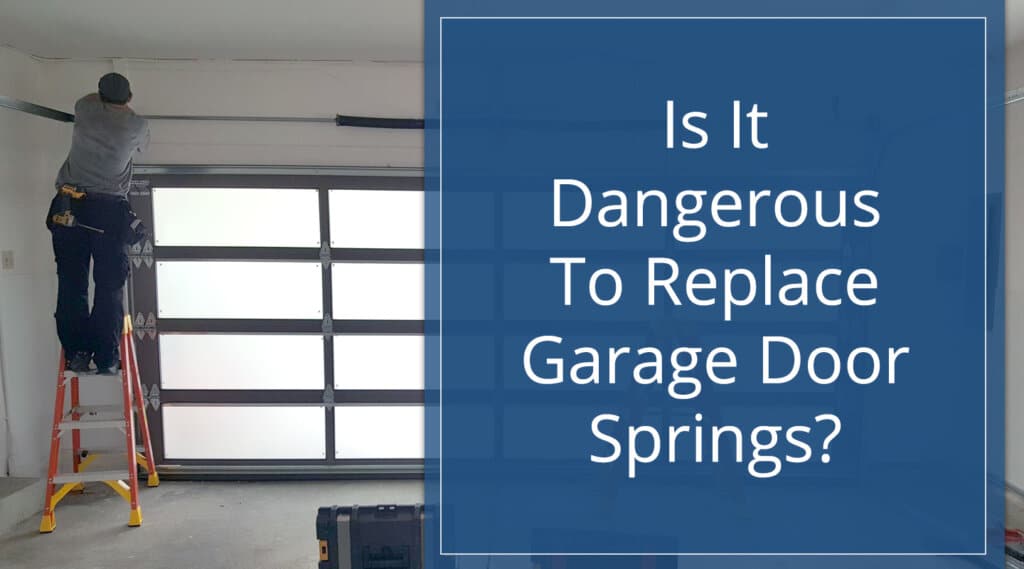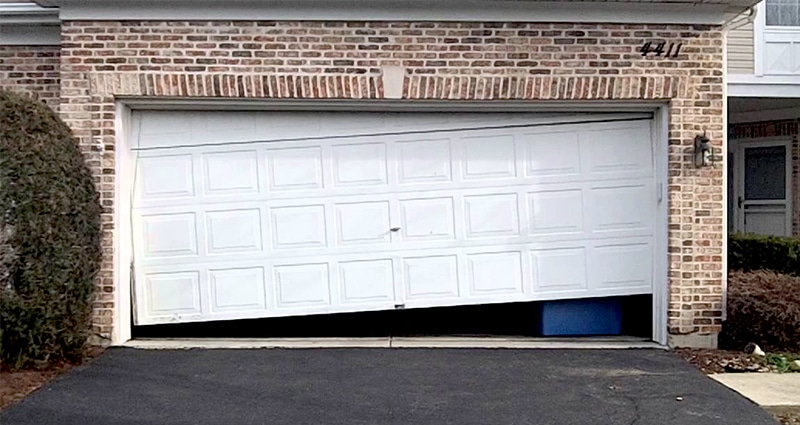
Is It Dangerous To Replace Garage Door Springs?

Is it dangerous to replace garage door springs? Yes. Our experienced technicians make the process of replacing garage door springs look easy but it’s actually a dangerous task. This type of repair is best left to home improvement experts and skilled DIYers.
Is It Dangerous To Replace Garage Door Springs?
Risks of replacing garage door springs:
- Result in life-threatening injuries
- Buying the wrong springs
- Bad installation
- Problem misdiagnosis
The question of “is it dangerous to replace garage door springs” is serious because the biggest risk of replacing garage door parts like springs is the loss of life.
Risk # 1: Result in life-threatening injuries
Even the lightest garage doors weigh about 130 pounds. The springs on your door help control that weight as the door goes up and down. The coiled springs wind and unwind releasing and storing energy that can be incredibly dangerous when suddenly released. A sudden release of energy can be caused by springs or cables breaking. Being in the vicinity of a broken or breaking spring is dangerous because the scene can be chaotic.
- Springs flying
- Cables flying
- Door slamming down
Flying springs, cables, and doors falling can all happen when a garage door spring breaks. While many experienced handymen are skilled in garage door maintenance and can diagnose bigger issues not all handymen can handle a garage spring replacement job.
Caution should also be used when working with damaged, warped, worn, or rusted springs or cables because they may also break as you are working with or near them.
Risk # 2: Buying the wrong springs
There are many types of springs available so you’ll need to know which type of springs your door uses before you make any purchases. The two main types of springs are extension springs↗ and torsion springs↗.

Replacing garage springs yourself can save you money upfront but it may take longer and buying the wrong springs can end up costing you more time and money. Understand which types of springs are available, what types of coatings are available, and how the size and weight of your door affect your spring choice.
Risk # 3: Bad installation

Bad installations are another risk of replacing garage door springs. Proper installation will guarantee good performance. Doors need the right parts and a good installation to function properly and to maximize its life. Installing the wrong parts or installing parts poorly can cause the door to be faulty or unbalanced. Unbalanced doors cause drag and stress on other parts of the door lifting system which can lead to more failures.
Having the right tools, parts, strength, and know-how is key to providing a good and safe installation.
Risk # 4: Problem misdiagnosis
There are multiple moving parts on your garage door. Because there are so many parts moving or holding the weight of the door, there are many opportunities for a part to become damaged or break. Misdiagnosing the problem can leave you at risk of injury and end up costing much more time and money. While you may be improving one part of the door system you may be completely ignoring the actual cause of the problem. One example of a common misdiagnosis is thinking that the springs need to be replaced when they just need additional tension. You don’t want to replace springs unless it’s absolutely necessary.
For assistance in diagnosing your garage door problems contact a professional.
Heritage Garage Door has served Southern California homeowners for over 30 years. Explore our website to learn more about us or contact us to schedule a repair, replacement, or installation service.


